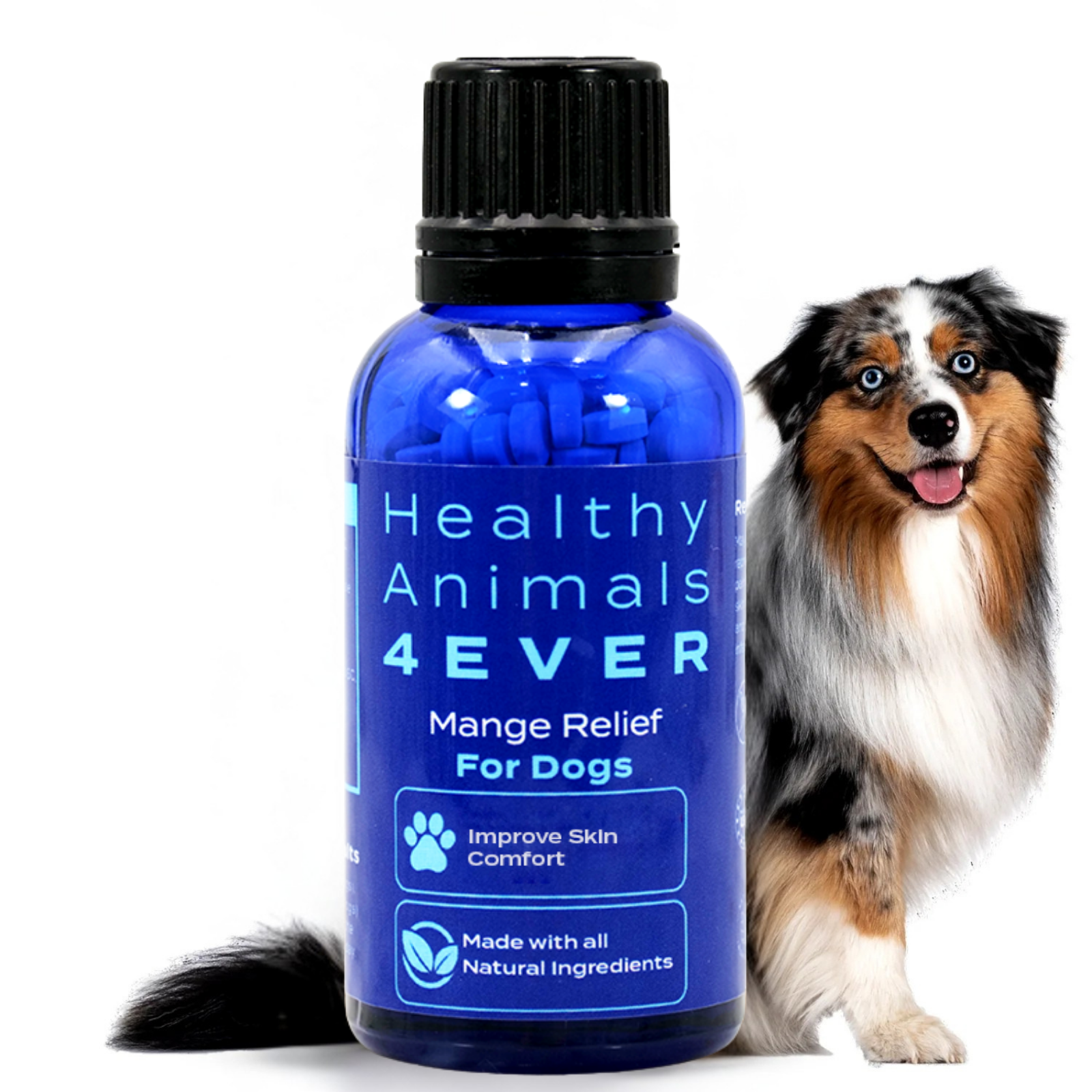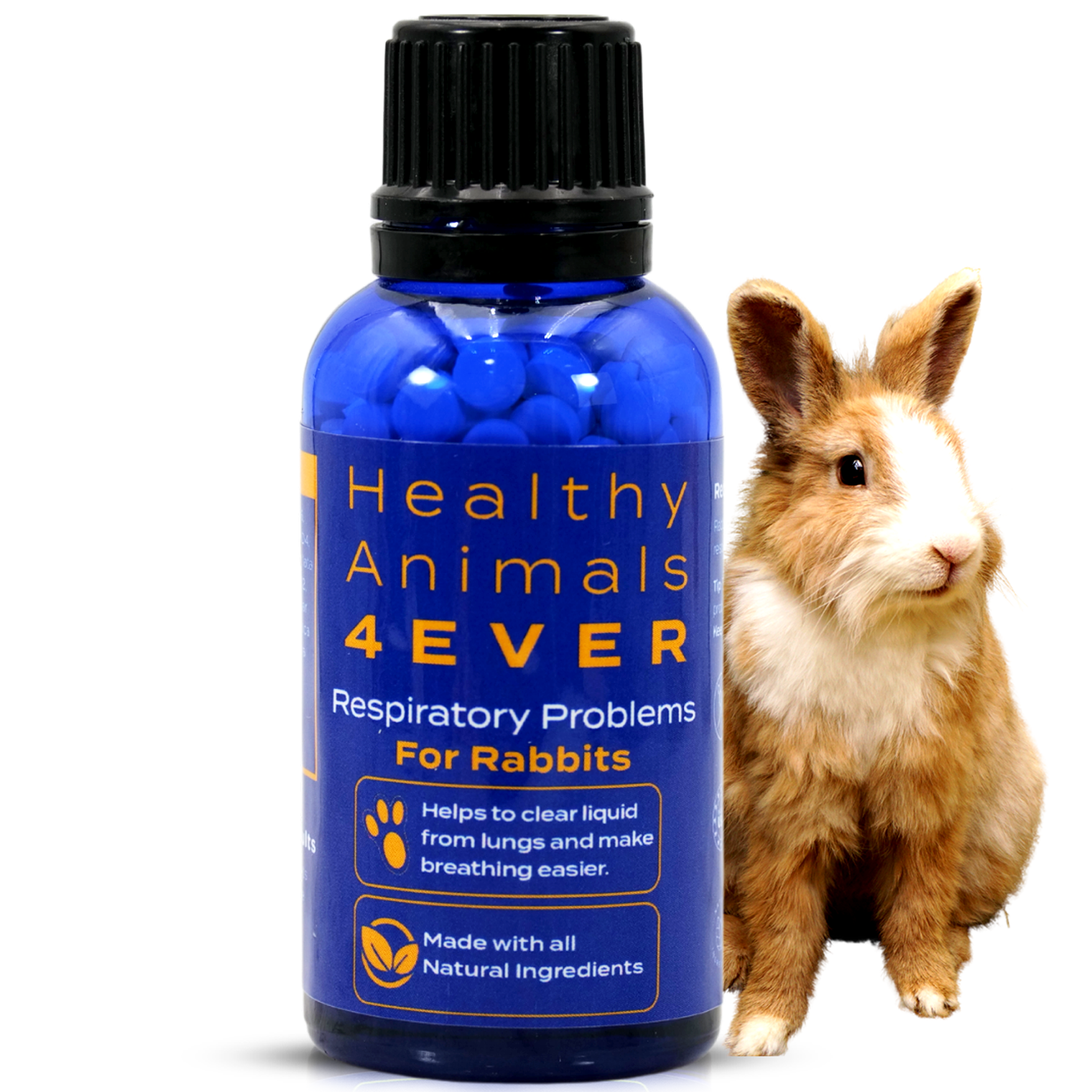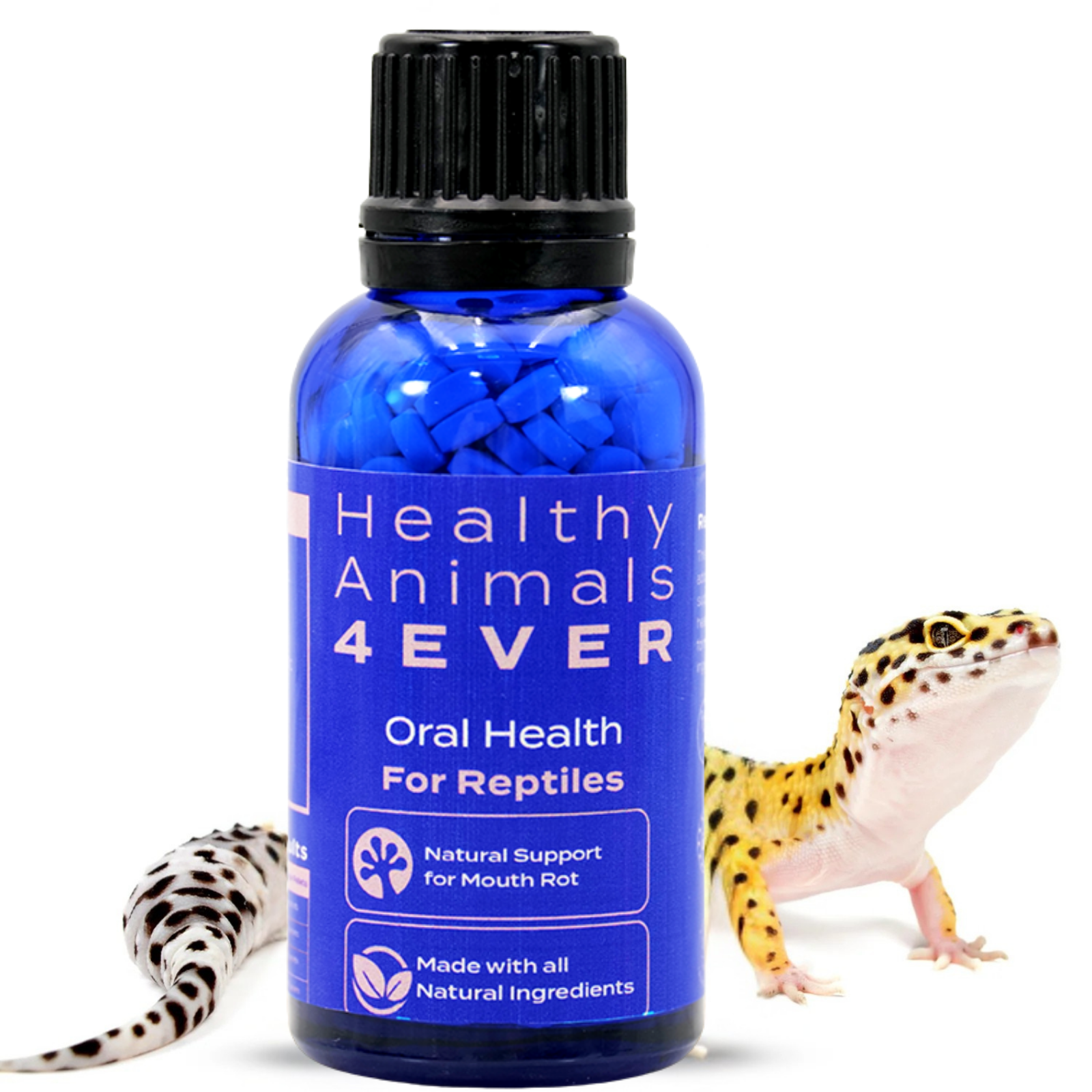Rabbit Skin Care: How to Spot and Treat Common Skin Issues
Rabbits make delightful pets with their gentle nature and endearing habits. However, like other pets, they can be prone to certain health issues, including skin conditions. Rabbit owners must know these potential problems to ensure their pets remain healthy and comfortable.
Skin Condition Remedy is a natural remedy for common skin problems in rabbits. Promotes healthy fur growth, helps with irritation, itching, and redness, and repels fleas and mites. Suitable for all skin types, including sensitive skin. All-natural formula.
1. Mites
Types of Mites:
- Cheyletiella Mites (Walking Dandruff) are visible to the naked eye and cause flaky skin.
Symptoms:
- White flakes resembling dandruff
- Itching and scratching
- Hair loss
- Red, inflamed skin
Treatment:
- Topical ivermectin or selamectin
- Antiparasitic shampoos
- Thorough cleaning of the rabbit's environment

- Psoroptes Cuniculi (Ear Mites) are common in rabbits and can cause severe discomfort and secondary infections.
Symptoms:
- Head shaking
- Scratching at the ears
- Thick, crusty ear discharge
- Red, inflamed ear canals
- Secondary bacterial infections
Treatment:
- Topical or injectable ivermectin or selamectin
- Cleaning the ears to remove debris
- Anti-inflammatory medication to reduce swelling and discomfort
- Regular monitoring to prevent recurrence
- Sarcoptes Scabiei (Burrowing Mites) cause scabies, a severe skin condition.
Symptoms:
- Intense itching
- Red, inflamed skin with crusting
- Hair loss
- Thickened skin in chronic cases
Treatment:
- Topical or injectable ivermectin or selamectin
- Antihistamines or corticosteroids to control itching
- Antibiotics if secondary bacterial infections are present

2. Fleas
Symptoms of flea infestation:
- Rabbits may constantly scratch or bite at their fur due to the itching caused by flea bites.
- Flea bites can cause redness and irritation, particularly in thin fur areas.
- Tiny black specks, or flea dirt (feces), may be visible on the rabbit's skin and bedding.
- In severe infestations, fleas can sometimes be seen moving through the rabbit's fur.
Treating fleas in rabbits requires a careful and comprehensive approach to ensure both the rabbit and its environment are free from fleas:
- Some oral medications can help control fleas, but always consult a veterinarian before using any product.
- Never use flea treatments designed for dogs or cats on rabbits, as they can be toxic to them.
- Clean and vacuum your rabbit's living area, including cages, bedding, and surrounding areas. Dispose of the vacuum bag or contents immediately to prevent re-infestation.
- Wash all bedding and soft toys in hot water to kill fleas and their eggs.
- If you have other pets, ensure they are also treated for fleas to prevent cross-infestation.

3. Flystrike (Myiasis)
Flystrike is more likely to occur under the following conditions:
- Unsanitary conditions, such as a dirty cage or hutch, attract flies.
- Rabbits with soiled fur, especially around the rear end, are more susceptible.
- Rabbits with underlying health problems, such as dental disease or obesity, may have difficulty grooming themselves properly.
- Fly populations increase in warmer months, raising the risk of flystrike.
Early detection is crucial for the successful treatment of flystrike. Watch for these symptoms:
- A rabbit with flystrike may seem unusually agitated or restless.
- Conversely, the rabbit might also become lethargic and less active.
- Affected rabbits often lose interest in food.
- Flystrike often produces a strong, unpleasant smell from the affected area.
- You may see maggots on the rabbit's skin, particularly around the rear end.
- The skin may appear red, swollen, and inflamed.

If you suspect your rabbit has flystrike, immediate veterinary attention is essential. Here's what typically happens during treatment:
- The vet will remove visible larvae and clean the affected area thoroughly.
- The vet will disinfect the wounds to prevent further infection.
- Antibiotics may be prescribed to treat or prevent secondary bacterial infections.
- Pain relief medications may be administered to help your rabbit cope with the discomfort.
- Depending on the severity, your rabbit might need fluids and nutritional support during recovery.
4. Bacterial Infections
Several factors can contribute to the development of skin bacterial infections in rabbits:
- Cuts, scrapes, or bites can become infected if not properly cleaned and treated.
- Dirty living conditions and inadequate grooming can promote bacterial growth.
- Conditions like dental disease, obesity, or immune deficiencies can increase susceptibility.
- Stress can weaken a rabbit's immune system, making them more prone to infections.
- Infestations with mites or fleas can damage the skin and create entry points for bacteria.
Recognizing the symptoms of a skin bacterial infection early can help ensure timely treatment:
- Infected areas may appear red and swollen.
- Pus-filled lumps can develop under the skin.
- Patches of hair may fall out around the infected area.
- The skin may develop scabs or crusts as the infection progresses.
- Your rabbit may show pain or discomfort, such as flinching or avoiding touch.
- There may be a foul-smelling discharge from abscesses or wounds.

Treatment of skin bacterial infections in rabbits involves a combination of medical and supportive care:
- The vet will prescribe an appropriate antibiotic based on the culture and sensitivity test.
- Topical antibiotic creams or ointments may be applied directly to the infected area.
- The infected area should be gently cleaned with a vet-approved antiseptic solution.
- Sometimes, the vet may need to remove dead tissue to promote healing.
- Pain relief medications may be prescribed to alleviate your rabbit's discomfort.
5. Fungal Infections (Ringworm)
Types of fungal infections in rabbits:
- Ringworm (Dermatophytosis): Caused by fungi such as Microsporum canis, Trichophyton mentagrophytes, and Microsporum gypseum. It is highly contagious and can spread to other animals and humans.
- Aspergillosis: Caused by Aspergillus fungi. It can affect the respiratory system and, in severe cases, spread to other organs.
Several factors can cause fungal infections in rabbits:
- Unsanitary living conditions can foster fungal growth.
- High humidity levels create an ideal environment for fungi to thrive.
- Rabbits with compromised immune systems are more susceptible to infections.
- Direct contact with infected animals or contaminated objects can spread the fungi.

Recognizing the symptoms of fungal infections can help ensure timely treatment. Common symptoms include:
- Circular patches of hair loss typically around the head, ears, and limbs.
- The skin in the affected area may appear red and flaky.
- The rabbit may scratch or bite at the infected area.
- Sneezing, nasal discharge, and difficulty breathing.
- The rabbit may become less active.
- A decrease in appetite can lead to weight loss.
- An elevated body temperature may be present.
Treating fungal infections in rabbits involves a combination of antifungal medications and supportive care:
- Antifungal creams, ointments, or shampoos can be applied directly to the affected area.
- In more severe cases, oral antifungal drugs may be prescribed.
- Provide a calm and secure environment to reduce stress, which can weaken the immune system.

6. Dermatitis
Causes of dermatitis:
- Infestations with mites or fleas can cause intense itching and inflammation.
- Flies lay eggs on the rabbit's skin, and the hatched larvae cause severe irritation.
- Common bacteria like Staphylococcus can infect the skin, especially if there are cuts or abrasions.
- Conditions like ringworm can lead to scaly, itchy patches.
- Certain foods may cause allergic reactions, resulting in dermatitis.
- Allergens like dust, pollen, or certain bedding materials can cause skin inflammation.
- Prolonged contact with urine-soaked bedding can irritate the skin, particularly around the hindquarters.
- Constant exposure to moisture can lead to skin breakdown and inflammation.
Common signs include:
- Inflamed areas of the skin, often warm to the touch.
- Persistent scratching or biting at the skin.
- Patches of missing fur, especially around the irritated areas.
- Formation of scabs or crusty lesions on the skin.
- Areas that are wet and oozing indicate severe irritation or infection.
- Increased irritability or signs of discomfort.
Treating dermatitis in rabbits involves addressing the underlying cause and providing supportive care to relieve symptoms:
- Medicated shampoos or ointments to eliminate mites and fleas.
- In severe cases, oral antiparasitic drugs may be prescribed.
- For bacterial infections, oral or topical antibiotics are necessary.
- Topical or oral antifungal medications are used for fungal infections like ringworms.
- Identifying and removing potential food allergens from the rabbit's diet.

Prevention Tips
Keeping your rabbit's living environment clean is crucial for preventing skin conditions. Clean the rabbit's hutch or cage regularly, removing soiled bedding, uneaten food, and waste. A clean environment reduces the risk of bacterial and fungal infections.
Use appropriate bedding materials such as straw, hay, or paper-based bedding. Avoid cedar or pine shavings, which can cause skin irritation and respiratory problems.
Ensure the living area is dry and well-ventilated to prevent moisture buildup, which can lead to fungal infections.
Regular grooming helps keep your rabbit's fur and skin healthy:
- Regularly brush your rabbit's fur to remove loose hair, dirt, and debris. This is especially important for long-haired breeds.
- While grooming, check for signs of parasites like mites and fleas. Early detection can prevent infestations from becoming severe.
- Keep your rabbit's nails trimmed to prevent them from scratching themselves and causing skin damage.
Preventing parasitic infestations is crucial for skin health. Use vet-approved or natural flea and mite prevention products. Regularly clean and sanitize your rabbit's living area. Quarantine any new pets before introducing them to your existing rabbit to prevent the spread of parasites.
Stress can weaken a rabbit's immune system and make them more susceptible to skin conditions. Create a safe, secure, and quiet living environment for your rabbit. Spend time with your rabbit daily to provide social interaction and mental stimulation.

Natural remedies for skin conditions
Natural remedies can provide gentle and effective relief for various skin conditions in rabbits. Using these treatments thoughtfully and with proper veterinary care can help keep your rabbit's skin healthy and comfortable.
1. Aloe Vera
Aloe vera is known for its soothing and healing properties. It's effective for treating minor cuts, burns, and irritation.
Use pure aloe vera gel (free of additives) and apply a thin layer to the affected area. Ensure your rabbit doesn't ingest the gel, which can cause digestive issues.
2. Coconut Oil
Coconut oil has antifungal, antibacterial, and moisturizing properties, making it suitable for treating dry skin, fungal infections, and minor wounds.
Gently rub a small amount of virgin coconut oil onto the affected skin. Use sparingly to avoid a greasy coat and monitor for any allergic reactions.
3. Chamomile Tea
Chamomile has anti-inflammatory and soothing properties that can help with skin irritation and inflammation.
Brew a strong chamomile tea and let it cool. Use a clean cloth or cotton ball to apply the tea to the affected area. Repeat several times a day for relief.

4. Apple Cider Vinegar
Dilute apple cider vinegar with an equal amount of water. Use a spray bottle to mist your rabbit's coat lightly, avoiding the eyes and ears.
5. Oatmeal Baths
Oatmeal is soothing for itchy and irritated skin and can help with dermatitis.
Grind plain oatmeal into a fine powder and add it to warm (not hot) water. Gently bathe your rabbit in the oatmeal water, ensuring the water is lukewarm to avoid stressing your rabbit. Rinse thoroughly and dry your rabbit well.
6. Calendula
Calendula has antifungal, antibacterial, and anti-inflammatory properties, which makes it ideal for treating wounds and skin irritations.
Use calendula cream or make tea from dried calendula flowers. Apply the cream directly to the skin, or use a cloth to apply the cooled tea.
7. Honey
Raw honey, particularly Manuka honey, has potent antibacterial properties and can promote wound healing.
Apply a small amount of honey directly to minor cuts or abrasions. Cover it with a bandage to prevent the rabbit from licking it off.

8. Neem Oil
Mix a few drops of neem oil with a carrier oil (like coconut oil) and apply sparingly to the affected area. Avoid applying too much, as neem oil can be potent.
Tips for Using Natural Remedies:
- Always perform a patch test on a small area of your rabbit's skin before using any new remedy to check for allergic reactions.
- Keep a close eye on your rabbit after applying any remedy to ensure no adverse reactions.
- Maintain a clean living environment to support the effectiveness of any treatment and prevent further infections.
- Ensure your rabbit stays hydrated and receives a balanced diet to support overall skin health.
- While natural remedies can be helpful, always consult a veterinarian for persistent or severe skin conditions.
The Bottom Line
Awareness and early intervention are crucial to managing skin conditions in rabbits. By understanding the common skin problems affecting your rabbit, you can take proactive steps to ensure their well-being. Always consult a veterinarian for proper diagnosis and treatment, and maintain a clean and healthy environment to keep your furry friend happy and comfortable.









